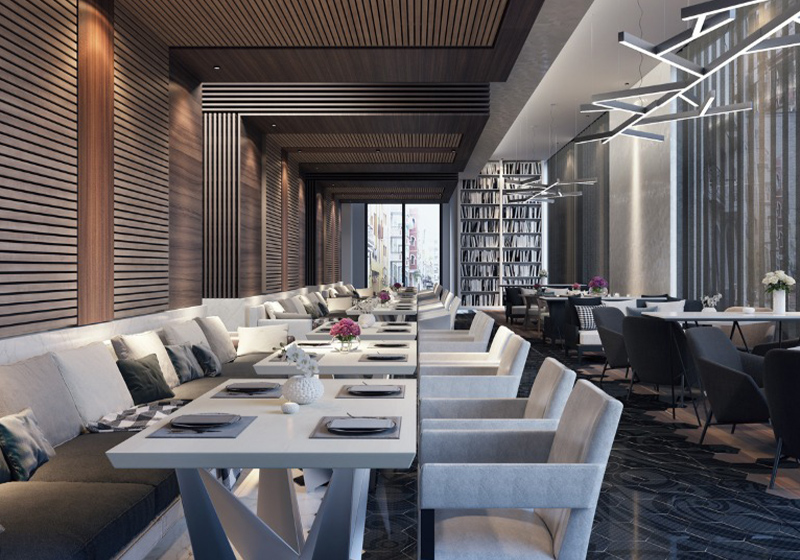Interior design in the hospitality industry, and especially hotels - which enhance the aesthetics of the entire establishment is an important factor for guests' satisfaction.
How hotel design affects guest satisfaction
Customers are getting ideas from the digital world, especially from television and the internet about the modern trends and wide variety of designs available and generating their preferences and expectations. In turn, guests at hotels of every level are expecting more in terms of the incorporation of style and design in each and every area of the hotel, from guest rooms to lobbies. The quality and comfort that an organization offers to its guests and related services give more guest satisfaction.
Hotel interior design
It can help mark a guest’s experience. Hotel interior design creates the first impression on anybody who walks through the hotel’s doors. The interior environment must be created to be lively and beautiful to make guests have an experience that is rewarding, pleasant and comfortable to make them return for repeat patronage. For instance, a well-designed lobby is an indication of a well-designed room. Equally, an outdated lobby with old furnishings can turn off guests who are seeking clean and modern amenities. With today’s technology, potentials search hotels online where they want to stay based primarily on the design before considering the price. When a hotel has really cool unique features, then the hotel is marketed free; a good product market itself. In our society today, people look at pictures when looking at a hotel online to see if it is new, clean, and has space before booking. Once someone sees that a family member or friend stays in a cool hotel, then the person will want to go to the same hotel. Interior design should be a priority during hotel construction.
The findings demonstrated that effective hotel room interior design minimizes wear and tear maintenance costs, makes guests feel more content and eager to spend more, and improves patronage, resulting in increased revenue production and enhancing hotel owners’ return on investment (ROI). As a result, management should employ correct interior design to make guests more comfortable while also lowering maintenance costs in order to enhance revenue creation. Hotel interior design is not a one-time event; it is fairly normal for, say, bedrooms to be remodeled on a regular basis due to wear and tear. Wallpapers, for example, are represented in a similar way. Hotel management may choose to keep the prior design or consider making modifications to the interior design. It may be critical to gain deeper insight into clients’ design aesthetic preferences and to develop hotels in accordance with their wishes.
Customer satisfaction
Customer satisfaction is increased when a customer feels that the hotel design and its color, lighting, and music are reflecting the quality of the hotel. Also, customers tend to set higher their perceived reasonable prices if the physical environment is reflecting or increases hotel quality. It becomes important to maintain a high standard interior design of hotels to make hotels a destination of preferences that will satisfy the guests and provide them with unique comfort and experience, as well as providing the right financial returns to the owners. This is because more hotel users are becoming more educated, selective, responsible, and sensitive to their immediate environment.
Furniture
It is another key element in the hotel design from customers’ point of view, which they judge by its comfort and aesthetic look. The photos of furniture on websites are also important to consider because they influence customers’ online booking and preferences. Regarding style, although modern and classic are the most popular hotel design styles from customers’ point of view, adding unique and cultural touches adds a lot of value. The importance of proper furnishing in the hotel context is related to the functionality and accessibility of the design and how it can be used, as well as its aesthetic look. It is proved to influence the perception of the overall hotel design, customers’ comfort, and their satisfaction.
Artifacts and art pieces
Art pieces attract hotel guests’ attention, influence their choice and preference, and increase enjoyment and happiness. Although these are extra touches, their influence was found to be more important than expected and hotel guests seem to appreciate art and design more than hotel managers may think. There are many ways in which the art pieces may contribute to the overall positive perceptions of the hotel interior. In the case in which the hotel space is too fragmented into different subspaces, the repetition of the art pieces that represent the same or similar style would make an impression of unity. The provision of glass and large-sized windows makes a positive noticeable difference to hotel guests too, by making the outer view more accessible, making the place airier, and enhancing light. Therefore, hoteliers should try to provide glass walls and windows as much as they can. Also, the availability of natural cues seems to have the same positive effect on guests, including the use of fresh flowers, greenery, and water, which hoteliers should consider and try to offer to their guests too.
Customer experience
It is one of the most essential variables influencing positive customer behavior such as loyalty and personal recommendation is customer experience. Customer satisfaction may give hotels significant competitive benefits in the hospitality business, leading to increased profitability and expansion.
In today’s world Interior decoration has assumed greater importance; there are various aspects of interior decoration such as color texture, pattern, lighting, heating, ventilation, etc. Interior design in the hospitality industry especially hotels which enhance the aesthetics of the entire establishment is an important factor for guests’ satisfaction. It can also act as a benchmark for the levels of facilities. Therefore, eye-appealing and quality hotel interior design is more important than ever before. One of the key considerations for hotel interior design is to find a balance between operational functionality and the physical environmental elements. The lobby is the first space guests will encounter, and quite possibly the first impression guests will form of the hotel, based on the physical environment.



